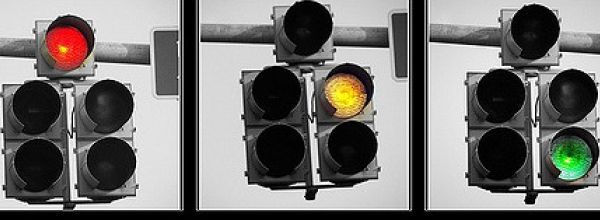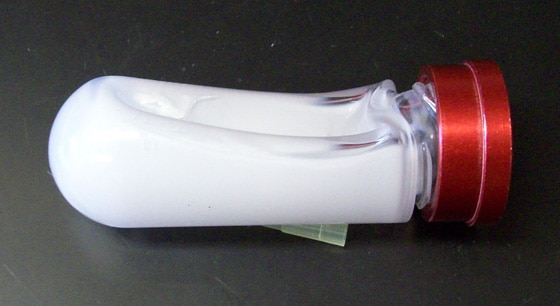Measurement drift is a gradual change in the measurement given by a piece of equipment. This can cause problems with experiments long term, especially for a vital piece of lab equipment like an analytical balance. Discover why it happens and how to avoid it.
Why Measurement Drift Matters
As scientists, we’re often (quite rightly!) told about the need for accuracy and precision in our measurements and experiments. If you work in a scientific environment, whether a pharmaceutical lab or a bioscience research institute, you will likely make regular, extensive use of analytical balances. These precise lab instruments are highly sensitive and must be highly accurate. These sensitive lab pieces of equipment require careful handling to ensure ultimate accuracy, so read on for our simple guide on how to achieve this!
What Makes an Analytical Balance Different from Other Balances?
Analytical balances are designed to deliver extremely precise results—as low as one-millionth of a gram. Therefore, they are often used for quality checks in the production processes of many pharmaceutical manufacturing companies.
These analytical balances are greatly affected by their environment and how they are installed and handled. This is why it is important to assess the lab environment to make the required on-site adjustments.
The weighing equipment you use in a lab should always deliver accurate results, and all the elements that can cause any discrepancies should be eliminated. Something as simple and innocuous-seeming as the opening and closing of a freezer door can cause the temperature to fluctuate! This small temperature change in the environment should be prevented to ensure optimal conduction of weight measurements.
What Causes Measurement Drift in Analytical Balances?
The measurement drift phenomenon can adversely affect analytical balances when weighing compounds. Measurement drift refers to unstable weight readings, typically due to static charge, air drafts, and inconsistent ambient temperatures.
This drift can cause measurement changes and leads to displayed imbalances. Additionally, readings also become unstable if enough static electricity is present in the environment. This can occur even if you don’t apply any weight to the balance.
Pharmaceutical production line areas are generally kept clean under highly controlled conditions. The humidity levels are generally below 20% with 24-hour air conditioning. This creates a dry environment; hence, any movement of objects can cause friction. The friction can create static electricity, leading to considerable errors and discrepancies in weighing measurements ranging up to dozens of milligrams.
How You Can Avoid Analytical Balance Measurement Drift
Tip 1: Monitor and Adjust Humidity
To keep static electricity from building up and causing the measurement drift effect, it is essential to ensure that humidity levels for weighing equipment are raised to 40% at the installation time. Despite that, if the static energy keeps accumulating and the rate of electrical discharge is slow, weighing operations should not be made until the electrical charges are eliminated from the weighing sample.
Tip 2: Avoid Static Electricity
After weighing, samples should not be stored in plastic containers as they are porous and operators should always conduct weighing operations while standing on anti-static flooring.
Tip 3: Consider the Temperature
Another external factor that dramatically impacts the accuracy and stability of analytical balances is temperature.
Temperature control is crucial in avoiding the measurement drift phenomenon. This includes maintaining constant temperatures in the environment and for your weighing equipment by carefully avoiding air drafts and nearby cold objects.
The best way to ensure temperature stability is to maintain a variation of not more than two degrees around the clock. Also, the weighing instrument should always remain on so that the temperature remains consistent.
Evaluating the Performance of Analytical Balances
In addition to applying these three tips to avoid measurement drift, it’s also important to evaluate the performance of analytical balances by carrying out routine testing. This will help determine whether they need on-site modifications, repairs, or calibration.
Problems can occur due to defective components or how users operate them. You should therefore test them for repeatability to ensure that they are delivering accurate results consistently for a given object.
Tips for testing repeatability:
- Use a solid, non-magnetic, and non-porous container or a test weight and weigh it repeatedly after returning to zero at the end of every weighing cycle.
- Try weighing two objects separately that are exactly half the total weighing capacity. Then the difference between the two readings should be less than the actual tolerance for accuracy.
- Watch out for numerical readings turning blank or becoming frozen. This indicates your equipment may have been contaminated, damaged, or mishandled and thus is not producing the desired results.
- Cornerload is the term that indicates the ability of an instrument to generate the same readings for an object, regardless of where it is placed on the weighing pan. The readings should be the same at all the positions on the weighing pan. And if there are errors, they can be fixed during field service.
- Linearity testing ensures that the weighing instrument delivers the same sensitivity throughout its functional range.
Nothing is more critical than accuracy and quality for bioscience labs and pharmaceutical companies. Even a minute error means manpower and money wasted. Not to mention serious reputation damage and the risk of losing consumers. Periodic calibration and maintenance are the best ways to ensure the accuracy and reliability of analytical balances even with repeated use.
Resources
For a more in-depth guide on the key aspects of cleaning and calibrating your lab balance, see this handy guide from Grainger.
Originally published February 2017. Reviewed and updated February 2023.







